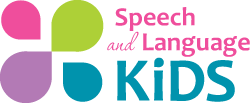If you’re doing my March Reading Madness Challenge this week, now is a great time to try to improve reading comprehension for your child. However, that’s easier said than done. Here are some tasks that will show you how to improve reading comprehension:
How to Improve Reading Comprehension in Fiction Books or Stories
How to Improve Reading Comprehension #1: Talk about the Characters in the Book
While you’re reading books with your child, see if he can tell you about the characters in the story. Who are they? What are they doing? Are they old or young? What do they like to do? Have your child describe the characters in as much detail as possible. Write these on a piece of paper with the heading “Characters: Who”
How to Improve Reading Comprehension #2: Talk about the Setting of the Book
Another thing you can do while reading the book is talk about the setting. This can include where the action takes place, when the story occurs, and what’s going on around them. Again, include as many details as possible. Write this on your paper with the heading “Setting: Where and When”.
How to Improve Reading Comprehension #3: Talk about the Problem of the Book
Most good stories have a problem that the main characters must overcome. See if your child can identify the problem and describe it. Write this down with the heading “Problem: What”.
How to Improve Reading Comprehension #4: Talk about the Solution
How did the main characters solve that problem? That’s your solution. Have your child describe it and then write it down with the heading “Solution: How”.
How to Improve Reading Comprehension #5: Sequence Events from the Story
Finally, ask your child if he can recall what happened at the beginning, middle, and end of the story. The middle will probably be your problem and the end will be your solution so then you just need to know how it all started. Have your child describe these three parts to you and then you can write it down in sequence with the words “Beginning: First”, “Middle: Then”, “End: Last”.
How to Improve Reading Comprehension in Non-Fiction Books
The above steps show you how to improve reading comprehension of stories or fiction books, but it is also important to help your child understand non-fiction books as well. If you are reading a non-fiction book with your child, try these tasks to improve reading comprehension.
How to Improve Reading Comprehension #1: Identify the Main Idea of the Book
What was this book about? Ask your child and see if she can tell you the topic. Write this at the top of a paper with the heading “Main Idea: Topic”.
How to Improve Reading Comprehension #2: Identify Five Supporting Details
What did your child learn about the topic? Have her describe five things that were told about the topic. You can help her by showing her the book so she can look back through it. Write these under your topic with the header “Details: Information”.
How to Improve Reading Comprehension #3: Answer Questions about the Book
After you have completed the last two steps with your child, start asking her questions about the topic that were presented in the book. For example, if the book was about dinosaurs, you could ask “what do they eat?” and “how do they move?”. Be sure to ask a variety of questions using “who”, “what”, “where”, “when”, “why”, and “how” questions.
There you have it! That’s actually 8 great tasks on how to improve reading comprehension! Make it fun and keep it light and your child won’t even know he’s working. For more great speech and language activities, sign up for my weekly newsletter and receive a free e-book about improving your child’s speech at home!
More Resources for Speech-Language Pathologists:
Looking for more therapy ideas and resources to help you provide the BEST services to your clients? Join us in The SLP Solution, our membership program for speech-language professionals! Inside the membership, you’ll find:
- Step-By-Step Guides for teaching a variety of speech/language/communication skills
- Pre-Made Worksheets and Therapy Activities for hundreds of different topics
- Training Videos for dealing with difficult disorders or problems
- Answers to Your Questions in our exclusive SLP community
- Tools and Resources to help you with your paperwork and admin tasks
- Continuing Education through our monthly webinars and webinar recordings
To join us in the full SLP Solution, or to snag a free membership, click on the button below!






Teaching kids to read is really important that parents should follow through these ideas.